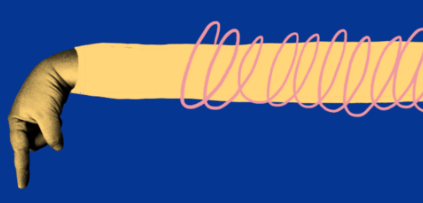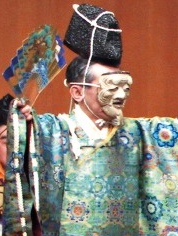

Okina and Hagoromo
Opening Night: July 13, 2016
Closing: July 31, 2016
Theater: Jazz at Lincoln Center-Rose Hall
Grand Master Kiyokazu Kanze is joined onstage by his son and artistic heir, Saburota Kanze, for the oldest Noh play, a dance-based sacred rite performed at times of special celebration. The piece includes both the Noh drama and the traditional comic interlude called Kyogen, featuring famous Kyogen actor Yasutaro Yamamoto.
BUY TICKETSREAD THE REVIEWS:
July 14, 2016
Most art forms evolve and change radically over the years. A French painting created today is unlikely to resemble one created in the 18th century. But the genre of Japanese theater known as Noh has hewed to traditional texts and performance styles for centuries, so that a Noh performance you see today resembles, to a remarkable degree, a performance in the 14th or 15th century. This form, which combines dance, music and drama, is performed primarily by specialists from families who have been steeped in its traditions for generations. The Kanze Noh Theater, one of a handful of the remaining traditional Noh companies, is presenting six performances encompassing seven plays through Sunday at the Rose Theater as part of the Lincoln Center Festival. Each performance includes two classic Noh plays, and some also include kyogen, which are presented between plays as comic interludes. Immersing yourself in the slow rhythms of Noh can take some time; it’s best to prepare by setting aside your expectations of modern Western theater entirely; otherwise, boredom and puzzlement will await. Noh plays are spare and simple, performed on a bare stage traditionally made of Japanese cypress, with just an image of a pine tree adorning the back wall. (Missing from the presentation at the Rose Theater, perhaps for sightline reasons, is the roof that normally covers the main playing area.) Movement is stylized: The actors shuffle onstage in stockinged feet that seem to move by the smallest increments, sliding forward at a rhythmic pace that becomes weirdly hypnotic. The opening performance on Wednesday included “Okina,” one of the oldest extant Noh plays, and “Hagoromo” (“The Robe of Feathers”), about a fisherman who encounters a mysterious maiden after discovering a robe hanging from a tree. “Okina” is really more a ritual than anything else — minimalist in terms of drama, even by the spare standards of Noh. A black box is brought onstage, followed by the lead player, in this case Kiyokazu Kanze, the 26th “grandmaster” of the family that created the genre some 700 years ago. His character, after whom the play is named, eventually dons a mask removed from the box, becoming a god who performs a ritual dance that “invokes omens of longevity and prays for peace.” Or so the program indicates; it’s impossible for modern audiences to glean this from the performance alone. (Supertitles in English provide a basic synopsis.) Still, even if the performance communicates little in terms of literal meaning, one can admire the rigor with which Mr. Kanze and his fellow performers enact this peculiar rite, moving their limbs and flourishing fans with striking precision. Behind the central performers are seated musicians — four drummers, who also chant, and a flutist — as well as a chorus, which performs with a similar singular dedication. Music and movement are sometimes in sync, but mostly independent of each other. After Mr. Kanze has concluded his rite, another character, Sambaso, a “harbinger of good harvest” played by Yasutaro Yamamoto, performs a stomping dance and eventually dons his own black mask to continue the dance. “Hagoromo” bears at least a trace of plot. The fisherman who discovers the robe of feathers, played by Tsuneyoshi Mori, is actually a supporting player who mainly observes the action when he encounters the Angel, who explains that only if she retrieves the robe can she ascend once more to heaven. In return she performs an elaborate dance clad in the robe. As this character, Yoshinobu Kanze (female roles are still often played by men in Noh theater) moves with remarkable grace and delicacy, using the fabric of his elaborate costume almost as an extension of his body. Indeed the billowing, voluminous costumes of the principal performers, beautifully patterned and carefully folded around the body, are among the most alluring aspects of the art form. In the context of Noh’s rigorous minimalism, the care with which they are manipulated becomes part of the drama. The flipping of a sleeve over an arm takes on a sudden dramatic urgency. And during the intervals of Mr. Kanze’s dance in “Okina,” attendants seated behind him carefully and decorously rearranged the hem of his garment so it would hang in perfect scallops. What this signified, I couldn’t say, but small details like this leave a singular, mysterious afterglow in the memory.
READ THE REVIEW


















